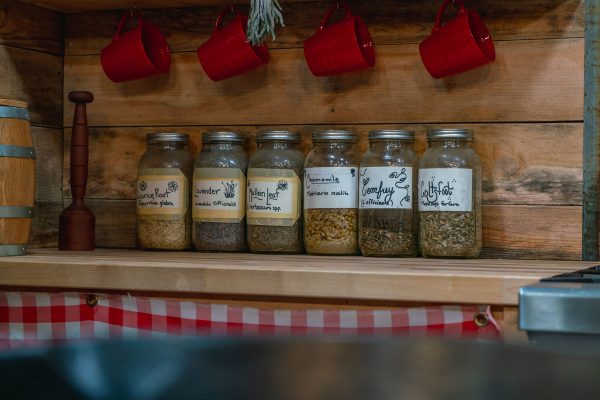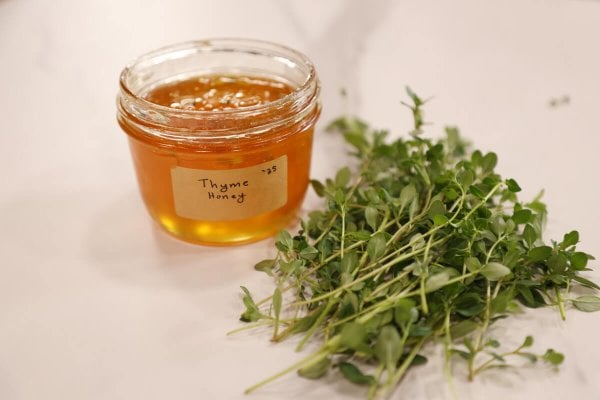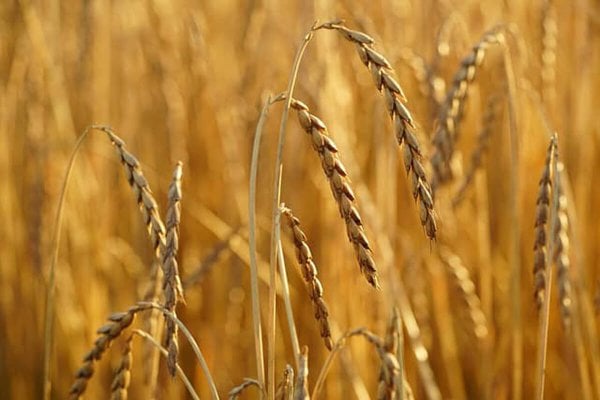








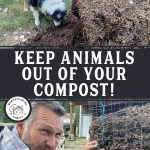
Learning how to start a compost pile (the easy way) and when and how to turn your compost pile are the first steps in home composting. But sometimes, you run into issues or questions that aren’t covered in a basic DIY or composting 101. We’re here to answer those questions!
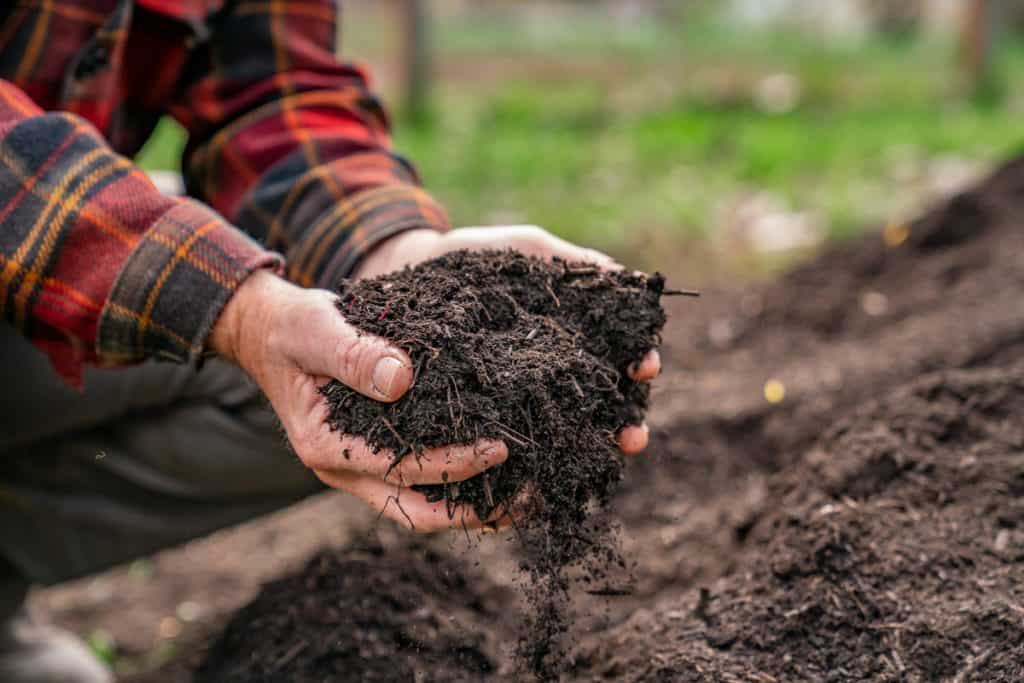
This post was originally written in 2022 after sharing my methods for quick thermal composting. But after spending some time with Noah Sanders on his homestead, I learned some great tips that I wanted to be sure to share, so we had him come onto the Pantry Chat Podcast to share his composting knowledge and wisdom.
Before spending time with Noah, I would have felt “lazy” about missing days (or even weeks) of checking on my compost and turning it at just the right time. But the beautiful thing that Noah shares is that compost gives us the flexibility to live life, and it will still do its job.
Just keep in mind that adding compost to our garden soil is the best gift we can give ourselves. And using homemade compost that’s still breaking down will continue to give to our gardens for years to come.
If you are looking for information on using compost tea to boost soil health, here is a compost tea recipe with tips and usage information.
If you’re new to composting or have some questions about your existing compost pile, watch the video below, or keep reading to see if your questions are answered in these home composting troubleshooting and FAQs.
About Noah Sanders
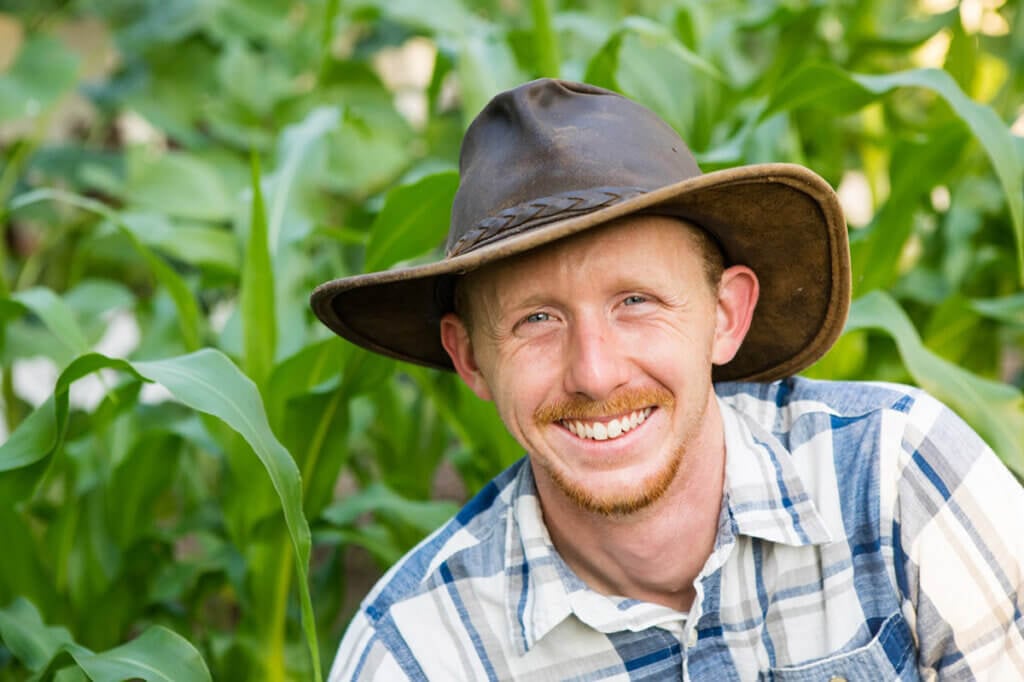
Noah Sanders is a farmer, homesteader, author, and teacher. He helps people who love Jesus and love agriculture connect their faith and farming so that they can find purpose in glorifying God and serving others while excelling in land stewardship.
As an avid farmer, Noah ran a successful farm business for 13 years he and his family started a ministry called, “Redeeming the Dirt.” Through this ministry and online academy, Noah is dedicated to helping people live for Jesus, excel in agriculture, and make disciples. Read to the bottom of this post for more information on where to find and learn more about Noah.
Common Compost Problems
There are common compost problems that Noah sees time and again. They all generally break down to the microbes in the compost pile not having enough of what they need to thrive which is food, water and oxygen. If the microbes get what they need, the problems tend to go away.
Compost Pile Not Heating Up
If a compost pile isn’t heating up, it’s usually due to one of a few things. Either not enough moisture, not enough nitrogen materials, or the pile size isn’t large enough.
These are all simple fixes because you can simply turn your pile, adding more moisture, more nitrogenous materials or more materials altogether as you turn.
Is My Compost Pile Too Hot?
First, what is too hot? Well, if you are using the metal rod method that Noah uses and you can’t hold the rod when you pull it out of the pile (after it being there for several hours) then it is time to turn it. If you are using a thermometer, then it’s time to turn it when it reaches 150 degrees or so.
The goal of a thermal compost pile is to grow microbes and beneficial critters that make what we call the soil food web which break down the materials in our compost pile. However, if the pile is too hot for too long, you’ll actually end up killing off these beneficial microbes resulting in a dead compost pile. Remember, dirt is dead, SOIL IS ALIVE!
Why Does My Compost Pile Stink?
If your compost pile starts to stink, you first need to consider what’s being composted in the pile. Ideally, a compost pile should smell earthy and pleasant. If it has an off smell or a repulsive smell, then you likely have an anaerobic situation going on, which means the pile has a lack of oxygen.
Usually, that is because the pile it too wet.
To remedy this, give the pile a turn, and add some dry material in the form of some browns and greens. You can also add some “chunky” materials like branches and larger sticks to add aeration to the pile. Within a few days of turning, the pile shouldn’t smell bad any longer.

Is My Compost Too Wet?
My general rule of thumb is that you want your compost to be like a damp sponge. You should be able to squeeze it and get a few drops of water out, but you don’t want a lot of water dripping from it.
Another good test is how well the compost compacts together. If you take a handful and squeeze it in your hand and it stays together in a clump, that’s a good sign. However, if it crumbles apart as soon as you’re done squeezing it, that’s a sign it’s too dry.
If you have a neglected compost pile that you’re recommitting to, or you’re just starting your first pile, you’re probably going to be adding some water. For a demonstration of exactly what to look for, check out my post on building a compost pile using my easy method.
Why is My Compost Pile Dry?
Just because your compost is dry doesn’t mean it’s not working. This is where using a compost thermometer comes in handy.
An active compost pile needs carbon, nitrogen, oxygen and water to work best. You don’t want your pile too wet, and you don’t want your pile too dry, you want it like Goldilocks, just right!
If you are pretty sure you’ve got plenty of “greens,” you know, nitrogen, in your pile, and it didn’t get up to temp, then it was probably too dry, and it is time to add some water!
For more tips on how wet your compost pile should be, check out this post on when and how often to turn your compost pile.
Home Composting FAQs
If you’ve never built a compost pile before, it’s a good idea to check out Noah’s course inside the School of Traditional Skills. He will walk you through, step-by-step, exactly how to build a pile. But for this post, we’re assuming you’ve built a compost pile or two and are looking for more help with troubleshooting any issues that come up during the composting process.
What are the Three Types of Composting?
There are three basic types of composting:
- Static Composting – this is where you just pile up materials on the ground and allow them to naturally break down over time. This is a much slower approach to composting and tends to create an uneven end product (that may also contain weed seeds that are undesirable in the garden).
- Thermal Composting – a thermal compost pile will create enough heat to speed up the decomposition process and kill off weed seeds. In general, you can compost materials in as little as eight weeks.
- Vermicomposting – Utilizing worms to help break down materials. This is a great option for those with smaller areas (such as an apartment).
Proper Compost Ratios (30:1 or 2:1?)
On the chemical side, we’re looking for 30 parts carbon to 1 part nitrogen. These are the ratios that create good decomposition. However, materials vary on how much carbon or nitrogen they contain, with some carbon-based materials being as high as 700:1 and some nitrogen-based materials being 10:1 or lower.
Mixing 2:1 in RATIO of materials by volume gives an easy and doable way to get close to that 30:1 chemical ratio we are looking to for good decomposition.
Can Compost Be Made Without Carbon Materials?
The nature of all dead materials is that they will break down eventually. However, a compost pile that lacks carbon will likely get very stinky and rotten, creating an unhealthy situation as well as attracting unwanted pests.
Also, carbon is the building block of life, so it’s also the building block of compost. You need that carbon in your garden, so I don’t recommend building a compost pile out of nitrogen materials only.
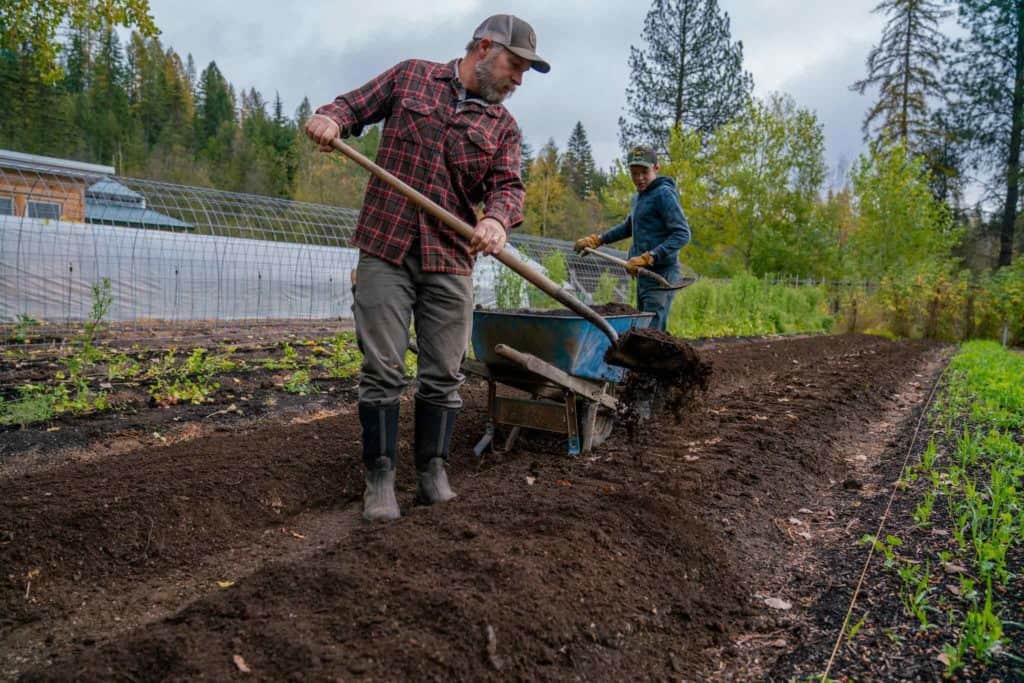
When to Add Compost to the Garden
Using compost in the garden any time of the year is great! But most people do garden prep in either the spring or fall. I like to add my compost in the fall after I clean the garden up. I just add a nice layer of 1-2 inches on top of the beds and let it settle into the soil over the winter. When spring comes and the soil warms up, I’ll loosen the soil with a broad fork, and I’m ready to plant.
However, if your garden is struggling mid-season or you are planting succession crops in the same space, you can always add some more compost to help feed those crops as needed.
Adding Hot Compost to Garden
Some of you have wondered if you can seed a garden with hot compost for the next crop cycle to improve the soil and also kill weeds present in the garden soil. Yes, you can add hot compost to a garden if it’s going to be sitting long enough that it won’t be “hot” by the next planting season.
This may or may not kill all the weed seeds, but you’d have to have your compost up in the 150 degrees F range for that to work consistently. Hot compost will, however, kill any garden seeds that you’re trying to grow, so don’t add hot compost to a spot you want to plant in right away.
Should I Cover My Compost Pile?
I’ve had many people ask me if they should keep their compost piles covered or uncovered. I have to give them my favorite answer, which is, “It depends”!
If you live in an area where there is a lot of rainfall or snow, you can cover your compost pile to keep it from getting over-saturated.
Likewise, if you live in a very hot area and want to keep your pile from evaporating off too quickly, you can keep it covered with a tarp on top but allow the sides to breathe.
However, because compost REALLY needs oxygen, if you’re always keeping your pile covered, this will slow down the oxygen exchange, which will slow down the process or could prevent evaporation of excess moisture if it was too wet when you covered it. Neither is good.
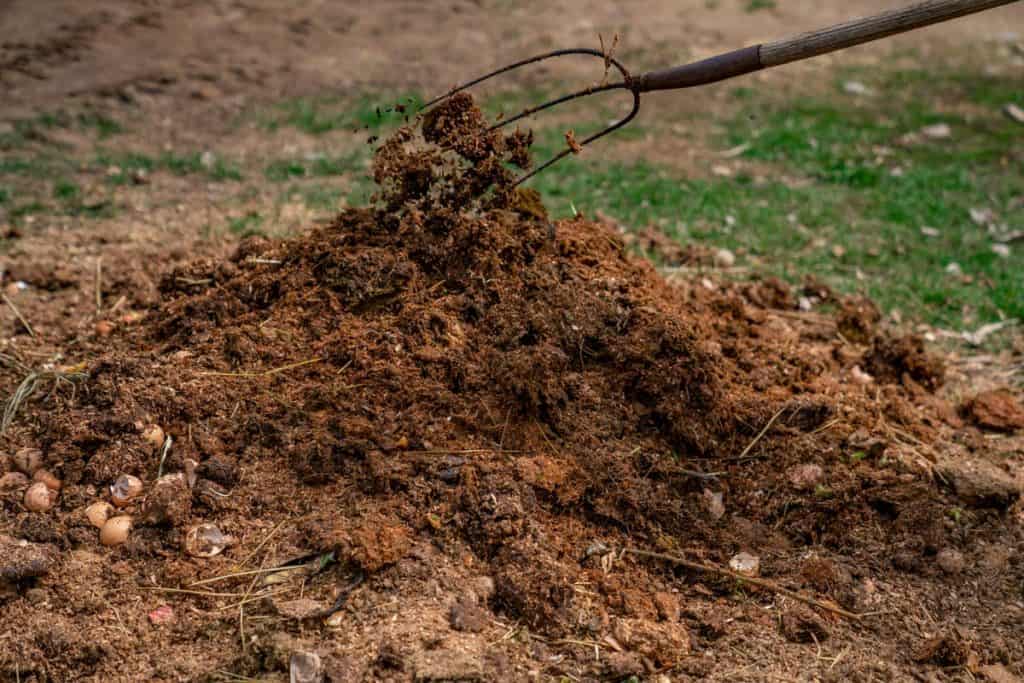
Should I Keep My Compost Pile in the Shade?
This is another question where the answer really depends on your area and the time of year. It doesn’t matter one way or the other if your compost is in the sun or shade. However, if you’re in a hotter climate, the shade will keep it from drying out as quickly (and it’s also nice to turn your pile in the shade during those hot summer months!).
If you’re building compost during the winter, you may want to choose a sunnier location to keep the heat up in the pile and allow you to be in the sunshine while turning the pile on those cold days.
Can I Compost Underground?
Some folks have asked if they can just bury their composting materials into the ground where they plan on gardening. Sure, this will work and can be appropriate in some situations, but it really shouldn’t be your go-to method.
My general goal for composting is to produce enough compost to build healthy soil across my entire garden in a measurable way.

Can I Compost on a Smaller Scale?
I’m sure you’ve seen those tiny compost bins that people keep on their kitchen counters, or even those 25-gallon compost tumblers, but does composting on a small scale like this work?
First of all, they are small. If you are growing more than flowers and a few herbs, you are going to need more compost, and since you are already putting in the time and effort, you really want to work at a scale that is worth your while. Second, I think they hold too much moisture and don’t circulate enough oxygen, so I avoid them.
The 3×3 compost “bin” that I demonstrate in my easy composting method is probably the smallest size pile you should go with. Noah recommends a 4×4 foot pile.
If you’re gardening on any scale at all, even if it’s a backyard garden with some raised beds, you’ll easily use this much compost within a year’s time.
What if I Don’t Have Enough “Greens” to Build My Pile?
If you’re a smaller household, having enough “greens” or nitrogenous materials may be difficult to start a decent compost pile. If you find you don’t have enough “green” material, you can always let it pile up until you have enough. Just know that this pile may get stinky or moldy as it’s going to be high in moisture and nitrogen.
If you have the space, you can spread it out in a thin layer, allowing the materials to dry out a bit to keep them from getting too stinky.
Another option is to ask around to neighbors and see if they can save their grass clippings or kitchen scraps for a week until you get enough for your pile.
But don’t let the “perfect” ratios keep you from starting your pile for too long. Compost will still make itself even if your ratios are off. It will just take longer.

Is Animal Bedding and Waste Considered “Brown” or “Green”?
It’s actually a little bit of each, but how much depends on your barn maintenance. If your barn and animal stalls start smelling, then your nitrogen is getting too high, so adding more wood shavings is how you would counteract that.
Keeping a clean and tidy barn also helps keep a good balance in your compost pile when you’re ready to use that material. As you clean out the barn a few times a year, your compost pile is already a great mix of greens and browns. This is the main way we build compost here at Riverbend.
You can even use the deep litter method in your chicken coop to create garden-ready compost and learn about spreading manure on the homestead.
Can I Use Active Compost to Help My Inactive Pile?
Absolutely! Using some active compost to help “seed” an inactive pile is a great way to help activate a pile that’s cooled off and become dormant.
All you need to do is add an active shovel-full to each layer or two of your new or inactive pile (as you’re turning and watering your inactive pile, ideally), and this will help recharge your compost.
I Have a Tumble Composter and it’s Always Too Wet. What Can I Add?
One of the reasons the plastic tumbler is too wet is that there’s no oxygen letting it breathe. This is one reason I don’t like these tumblers.
My suggestion for fixing this issue would be to add more brown materials and leave the lid open during the day to let more oxygen in.
The Sawdust I Get From a Sawmill is Already Wet, is This OK to Use as a Brown?
Absolutely! Just keep this in mind when you go to water your pile that you won’t need to add as much as with dry wood shavings.

Helping Your Compost Pile Breathe
Adding a perforated 3″ pipe in the long axis of your compost pile to add oxygen is a great method for those who really want to speed up the composting process.
I wouldn’t recommend using this pipe to add water to the center of the pile, however. It’s hard to tell how much water is getting added into the center and very easy to over-water this way.
Can You Add Wood Ash to a Compost Pile?
Yes, a little bit of wood ash is OK to add to a compost pile but sprinkle it in sparingly. Wood ash is very alkaline and will kill the biology of your compost if you add too much along with causing some pH imbalances. This can be good for some soils like clay, but go sparingly, or get into soil testing and find out exactly what you need.
Can You Compost in Any Weather or Temperature?
It does help to have warmer temperatures when building a compost pile so nature isn’t working against you with cooler temperatures that will slow the pile down.
Trying to get a compost pile completed before winter is ideal, however, you can allow your compost to sit out over the winter and it will go dormant. If it’s not yet finished breaking down you can always re-activate it in the early spring by following the tips in this post on knowing when to turn your compost pile.

Do You Leave the Compost Thermometer in the Pile All the Time?
Yes, I leave my compost thermometer in my compost pile during the summer, but in the winter I will remove it so it’s not sitting in the snow.
I like leaving my thermometer in because although I don’t turn my compost every day, when I walk by my pile I like to be able to see how hot it is without having to go find my thermometer first.
If you’re composting through the winter, you may decide that leaving the thermometer in is a better option so you can keep a close eye on the temperature of your pile.
Should I Add Worms to the Compost Pile?
Because you want to get your compost pile up to 120-150 degrees, if you add worms to your compost pile they’re just going to bail and find somewhere else to live that’s not so hot. So don’t waste your money or time by adding them to your pile early on.
However, if you have worms on your property, as your compost pile finishes up and cools down, those worms will likely find it! If you don’t have many worms around, it’s at this time that I’d recommend adding some in.
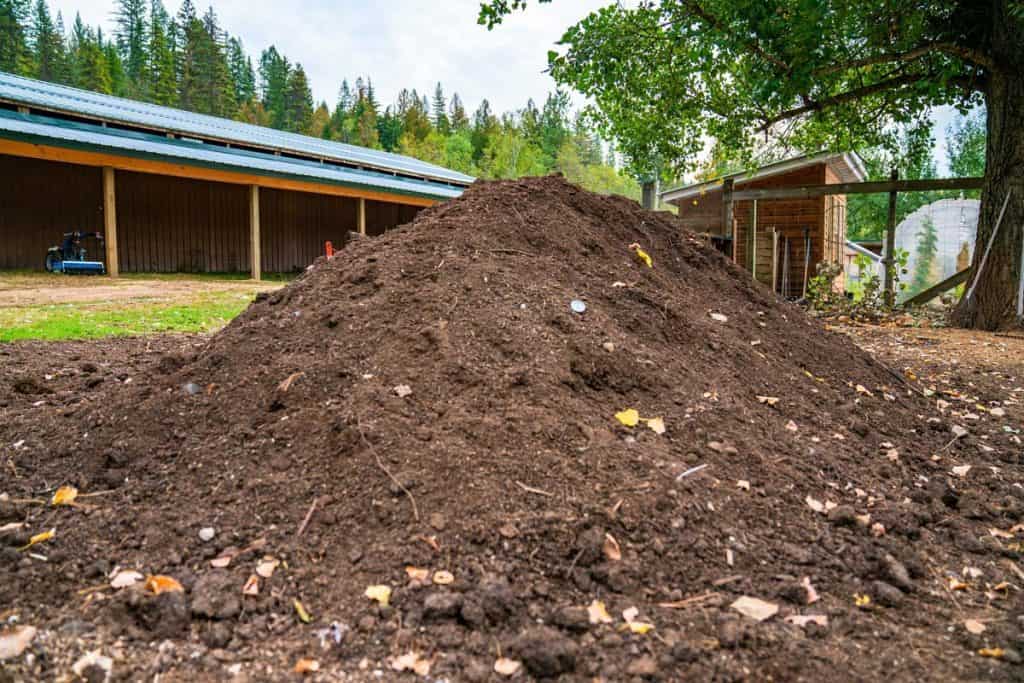
How Do I Keep Animals Out of My Compost?
If you’re building a compost pile with a lot of food scraps, chances are you’re going to have curious critters coming by to sniff and scout out your pile.
There are a few ways to help keep unwanted critters out of your compost pile. One simple way is to build a fence or keep your compost pile in a barn or protected area.
If you need to take more drastic measures, you can always run some electric wire around the pile.
When is My Compost Finished?
To know if your compost pile is finished, the pile will not be getting hot anymore and will have settled down to a nice loamy material. Your compost won’t look like the finished compost you buy bagged at the local nursery, but rather the material you’d find if you dig down just a little bit on a forest floor.
It will still be fairly “chunky” and look like it has more potential to break down. This is ideal because that means it will continue to feed your soil as it breaks down further over the following years.
If you’re concerned at all about the compost being too hot to put on the garden, take the temperature of your garden beds and then take the temperature of the compost pile. The temperatures should be similar, then you’ll know it’s safe to use.

Where to Find Noah
If you would like to connect with Noah, be sure to check out his composting class inside the School of Traditional Skills. And check him out at the following places:
- Redeeming the Dirt Website
- Redeeming the Dirt Academy
- His book, Born-Again Dirt: Farming to the Glory of God

Related Posts:
- How to Make Compost the Easy Way – Composting 101
- When and How Often to Turn Your Compost Pile
- Instant Garden in Under Three Hours
- Back to Eden Gardening with Paul Gautschi
- Making Raised Garden Bed Rows & Super-Charging Your Soil
- Get an Instant Garden by Growing Vertically
- How to Keep Weeds Out of the Garden
- 10 Common Gardening Mistakes to Avoid











